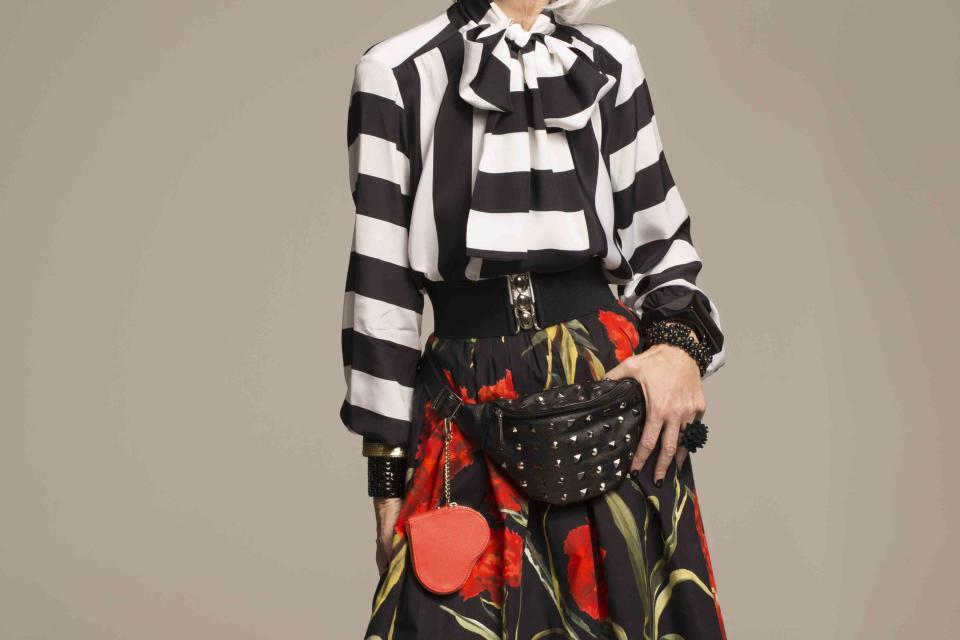Maximalist Fashion—i.e. Cluttercore—Is Back
More is more.

John Van Der Schilden/Getty Images
From clean girl to vanilla girl, past beauty trends have long stayed within simple, monochrome, and neutral territory. But with the puff-ification of fashion and recent runways bringing louder looks to the world of style, a wilder, more colorful trend is bursting back onto the scene: maximalism. This bold aesthetic—dubbed cluttercore—involves intentional layering, pattern mixing, and creative hair and makeup.
“Maximalism is the opposite of minimalism—bright colors, bold prints, mixing and matching, and a more-is-more approach,” says maximalist influencer and Wear Next magazine founder Daisy Olivia Jordan. “For me, it's all about having fun and breaking all the fashion rules—pretty much anything goes.” London-based celebrity stylist Miranda Holder calls the trend, “a celebration of color, texture, pattern and print, working on the basis that more is definitely more.”
Maximalist dressing on TikTok ranges from viral creator Myra Magdalen’s wild themed outfits — like the time she literally dressed as a horse girl, hoof shoes and all — to the more tame pattern mixing advice from stylists and influencers. Although there is a huge diversity in approaches to cluttercore, its popularity goes far and wide — even MasterClass has a beginners guide to maximalist fashion taught by Tan France. According to Jordan and Holder, this burst in popularity could be due to the cultural aftershocks of the pandemic. “The pandemic meant we were all stuck at home, not having much fun and wearing loose-fitting and comfy clothes,” Jordan says. “There's absolutely nothing wrong with that, but maximalism is the antithesis of this for me. It's about having fun again, dressing up and wearing whatever you want. It is so completely freeing.”
Holder adds, “After the pandemic the mood is celebratory and irreverent, there is a sense of making up for lost time, of living for the moment and ripping up the rule book.” But just because maximalism is everywhere, and promises to be joyful, doesn’t mean it's easy to recreate. Maximalist fashion can be overwhelming and feel impossible to do well—although we all loved it at the time, no one wants to unironically look like an early 2000’s child star on the red carpet. Thankfully, maximalism is no longer just sparkling skirts worn over jeans in wild patterns: with a little bit of focus on finding different but complementary pieces in your closet, the world of cluttercore can become accessible.
The key is excess, wearing too much at one time, while breaking the typical rules of fashion. “When I was young, I was told about fashion rules such as silver and gold shouldn't be worn together, pink and red clash, and that you should keep things simple so as not to look too over the top,” Jordan says. “I love that maximalism means all these rules have gone out of the window.”
Simply scrolling through the #maximalistfashion on TikTok can give you enough ideas for a month of looks. TikTokers like Eve Lily, Sabrina Guess, and Anna Golka-Yepez style bold monochrome looks—achieving more is more through a single tone or color—and make outfits pop with dramatic accessories. “Indulge yourself in whatever you are drawn to. Forget which color goes with which and pile them on, the more clashing patterns the better,” says Holder. “Go for texture, and mix it up by indulging in combinations of velvet, tulle, cotton, leather and denim or whatever appeals. And finally never, ever forget the accessories — the more ostentatious and plentiful the better.”
And, the main thing to remember to pulling these looks off? Confidence. Jordan says, “I always encourage people to wear whatever they want because it's all about confidence, and, for me, wearing colorful outfits makes me feel just that.”
Holder finds the maximalist trend to be much more than just a sartorial choice. “The wonderful thing about maximalism is it totally removes the judgemental aspect to fashion—the days of ‘What Not To Wear’ are truly over—and instead concentrates on how the wearer wants to express themselves. It’s feel-good-fashion at its best.”
For more Real Simple news, make sure to sign up for our newsletter!
Read the original article on Real Simple.


